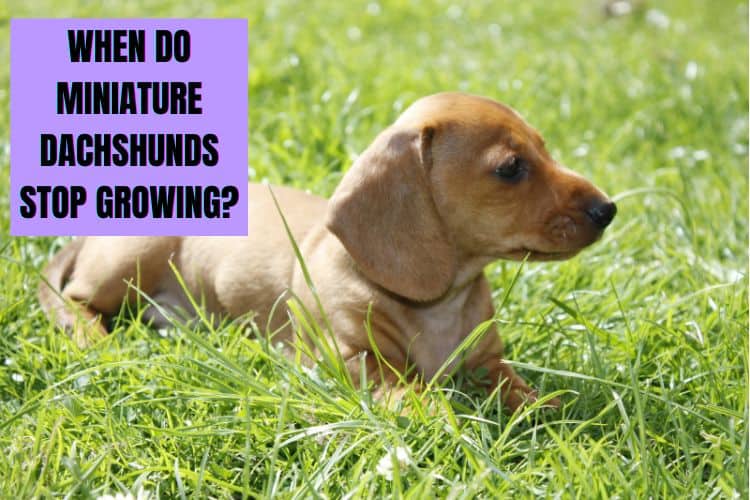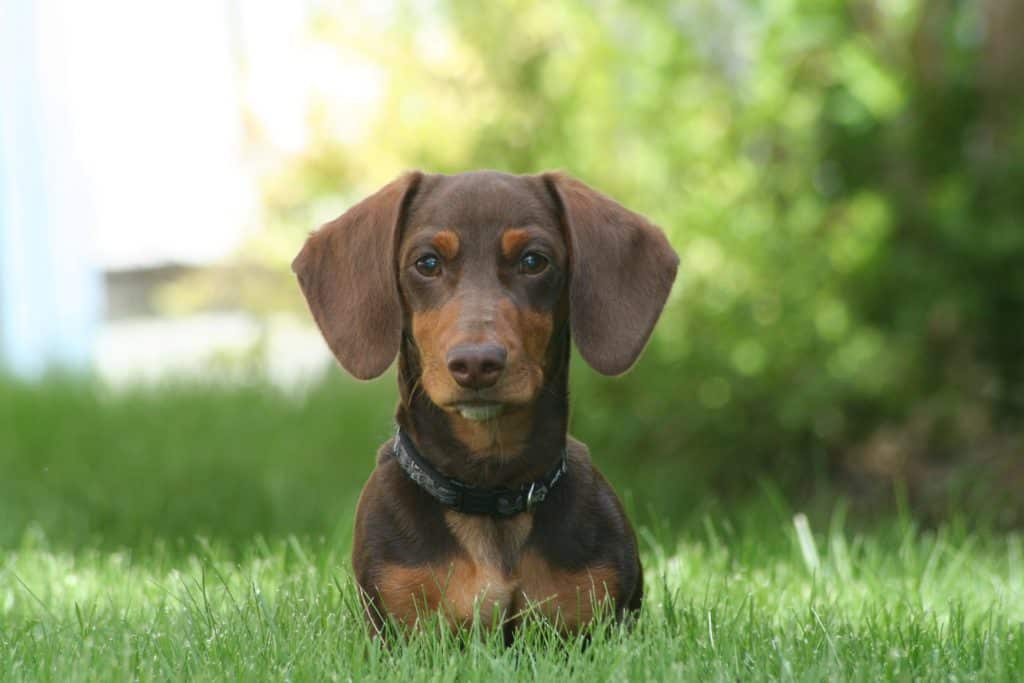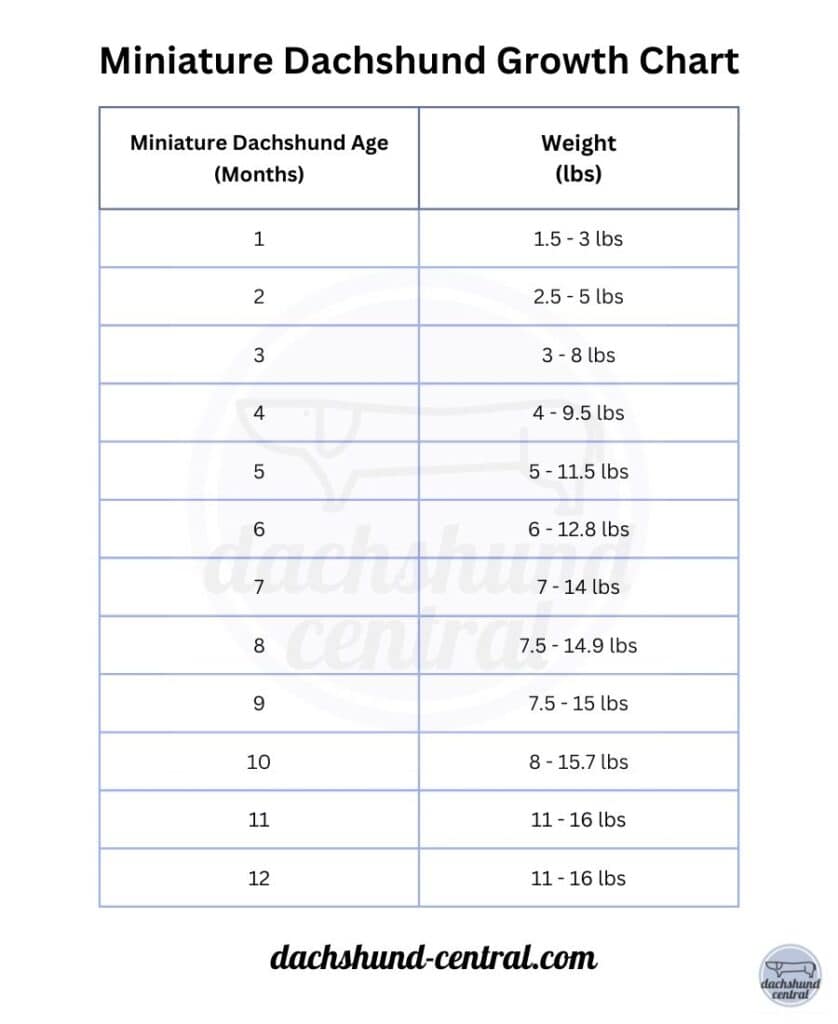
Miniature Dachshunds will be fully grown by the time they turn a year old. Generally, these puppies reach their adult weight and height around eight months of age. While there may still be some gradual development beyond this point, it won’t compare to the rapid growth rate seen earlier in life.
Dachshund Growth Stages: Understanding When Your Furry Friend Will Stop Growing
Have you ever wondered why your beloved mini dachshund hasn’t reached its full-grown size yet? As one of the world’s most popular pet breeds, they have certainly earned their spot in our hearts. It is key to understand when they’ll reach maturity so that we can plan and provide them with enough space. Knowing this information will help ensure a long and healthy life for your furry friend!
In this blog post, we will explore the factors that influence the growth and development of mini dachshunds. Additionally, you’ll discover useful tips for providing your pup with optimal nutrition and care to help them reach their fullest potential safely and joyfully!
Related Post: Are miniature dachshunds good pets?
The Different Types of Dachshunds
Before you can truly grasp the growth process of dachshunds, it’s crucial to recognize that these delightful animals come in three distinct sizes: standard, mini, and tweenie.
- The standard dachshund is the largest of the three, typically weighing between 16 and 32 pounds and standing 8 to 9 inches tall.
- The miniature dachshund, on the other hand, is much smaller, weighing between 11 and 16 pounds and standing 5 to 6 inches tall.
- The tweenie dachshund is a middle ground between the standard and mini dachshund, weighing between 11 and 16 pounds and standing 7 to 12 inches tall.
Learn more about the different types of dachshunds in this post: Types of Dachshunds

The Growth Stages of Dachshunds
Dachshunds undergo various development stages, from the moment of their birth to when they reach maturity. These growth periods can be separated into distinct key phases:
Puppyhood (0-6 months)
During the initial 6 months of their life, dachshunds develop significantly. In a mere half a year, these pooches will triple in weight and increase their height by an astounding 50%. This remarkable period provides them with plenty of energy to explore everything around them as they transition from pup to grown-up!
Adolescence (6-12months)
When a dachshund hits the 6-month mark, it’s officially in its teenage years. This is when their growth begins to slow down, but they still add some inches to their height. However, don’t expect any huge changes – most of the time your pup will keep about the same weight during this period!
Adulthood (12+ months)
By 12 months, a dachshund is fully grown and stops growing. They’re now adults whose height and weight will remain steady until they age further. Although their size may likely vary slightly as they grow older.
When Do Miniature Dachshunds Stop Growing?
Miniature Dachshunds reach their full size by the age of 12 months and are unlikely to grow taller after this milestone. However, they will continue adding weight until the two-year mark, so you may end up with a heavier pup than expected!
Miniature Dachshund Growth Chart
To better understand your pup’s growth process, it can be helpful to chart out their weight. This will provide you with a reference of their overall size at each stage of their life.


Factors That Affect Miniature Dachshund Growth
Not only does genetics play a major role in the size and growth of Miniature Dachshunds, but nutrition and exercise also have an effect. Due to this trifecta of variables, observing these factors is essential for any miniature dog owner looking to ensure their pup’s healthy development over time.
- Genetics: The size and growth rate of a Miniature Dachshund are largely determined by its genetic makeup. Some individuals may have a genetic predisposition to be larger or smaller than others.
- Nutrition: Proper nutrition is essential for proper growth and development in Miniature Dachshunds. Feeding them a balanced diet that meets their nutritional needs can help them reach their full potential.
- Exercise: Regular exercise is important for Miniature Dachshunds to maintain a healthy weight and promote proper muscle development. However, it is important to monitor the amount and intensity of exercise to avoid over-exertion and injury.
- Health: Certain health conditions such as hormonal imbalances, infections, and orthopedic problems can affect a Miniature Dachshund’s growth and development. Regular veterinary check-ups and prompt treatment of any health issues can help prevent or mitigate any negative effects on growth.
- Environment: Environmental factors such as temperature, stress, and socialization can also impact a Miniature Dachshund’s growth and development. Providing a safe, comfortable, and stable environment can help promote healthy growth and development.
When you have a Miniature Dachshund, it is important to remember that each pup has its unique rate of growth despite the same living conditions. To guarantee your furry friend’s optimal health and happiness, talk to your vet about creating a personalized care plan tailored specifically for them.
Conclusion
In conclusion, mini dachshunds can be a great addition to any household, but it is important to remember that genetics, nutrition, and exercise play a major role in the size and ultimate growth of these miniature pooches. It is essential to ensure they receive proper nutrition and adequate exercise, and that their coat is maintained accordingly.
All of these factors should be taken into consideration when looking for the perfect companion. With research, dedication, and plenty of love, you can be sure to provide your mini dachshund with the best possible care it needs to live a long happy life.
Taking care of a miniature Dachsies may require extra effort on your end but with the knowledge gained from this blog post you can rest assured that your waggy pup will grow healthy and strong!



